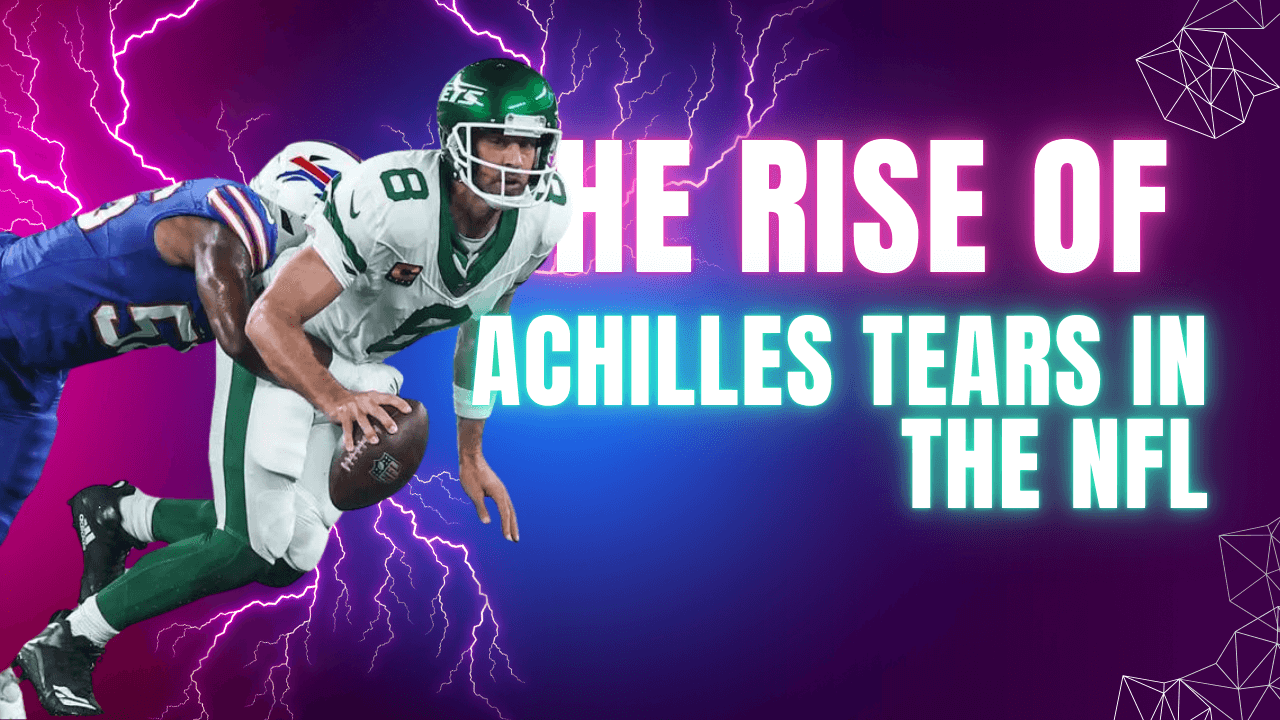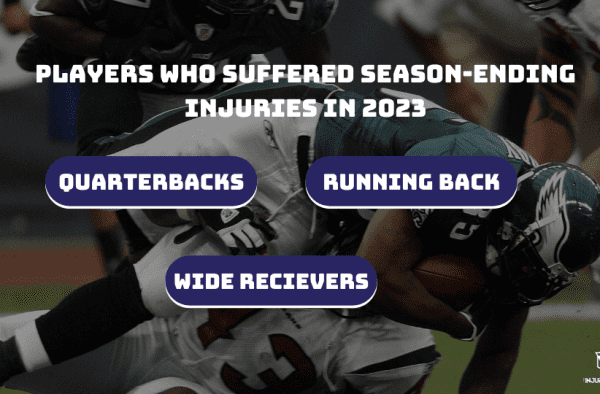Written by: Jesse Morse, MD, CAQSM
www.TheInjuryExpertz.com
July 26, 2024
There has been a significant rise in Achilles tears over the past 15 years in the NFL, accentuated by two of the top quarterbacks, Aaron Rodgers and Kirk Cousins, both suffering this injury in 2023.
The Achilles tendon is capable of handling up to 10 times the body weight during explosive movements. There is an area of poor blood flow about 2-6 cm from the insertion in the calcaneus, the narrowest segment of the tendon, and that is where most ruptures occur. The rupture often happens due to acute loading during acceleration or deceleration.
This article attempts to answer two different questions:
- Have Achilles Tendon Injuries significantly increased to unacceptably high incidence levels in the NFL?
- What are the underlying causes of the high incidence levels of Achilles Tendon ruptures in the NFL?
I will be referencing an article that was published earlier in 2024 with some solid reference points and research, but also adding my opinion. For the general public, a study from Finland completed in 2022 revealed a significant increase in the incidence of Achilles Tendon Ruptures (ATRs), from a rate of 2.1 per 100 person-years in the late 1990s, to 21.5 per 100 person-years as of 2019. That’s a 10x increase in about 30 years! There is some speculation that one of the primary causes of this is the increase of activity of adults in their 30s playing racket sports, soccer and basketball, but this is likely a multifactorial issue secondary to oral antibiotics, steroids, diabetes, diet related.
Now let’s apply this change to the NFL. The rate of Achilles Tendon Ruptures (ATRs) has doubled from 0.341 injuries per 10,000 athlete-exposures in 2009 to 0.731 in 2016. The COVID-19 pandemic further contributed to this rise, with a marked increase in ATR cases during 2020 and 2021. There were a total of 22 NFL players that suffered Achilles tears during the 2023 season alone!
From 1980 to 2001 there were approximately 4 Achilles tendon ruptures (ATRs) per NFL season. From 1997 to 2002 there were approximately 5 Achilles tendon ruptures (ATRs) per year. The research conducted by Hewett et al concluded that a large increase in the prevalence of Achilles tendon ruptures in the NFL in the season following the 2011 season lock-out, especially in the preseason, in which 12 ruptures occurred.
An article from Yang et al demonstrated that the overall return to play (RTP) rate from an Achilles tear in the NFL is 61.3%. Despite initial thoughts, risk factors like age, number of prior seasons, position type, and draft round status did not significantly affect the RTP when evaluated with Kaplan-Meier analysis. For those players that were able to return, the performance only in the season immediately following injury appears to be affected. I actually disagree with this finding specifically for running backs, as we have seen this position affected, performance-wise, the most by Achilles tendon ruptures. Several players (RBs) that have suffered an Achilles tear have never returned to preinjury form, including James Robinson, Cam Akers, and Marlon Mack.
Between 2009-2014 there was a significantly increased prevalence of Achilles tendon ruptures (ATRs) to between 13 and 16 ruptures per year. This is consistent with a study by Krill et al, which showed that from 2010-11 to 2016-17 there were a total of 109 Achilles tendon ruptures (ATRs), that is an average of 15.5 per year. Since then, based on reporting on social media over the last 3 seasons have averaged 17 Achilles tendon ruptures per year, culminating with the 2023 season having from what I can tell is the highest single-season ever of 22 Achilles tendon ruptures.
There is no doubt that the prevalence of ATRs in the NFL has increased between 300-500% over the past 30 years.
The study from Hewett et al concluded that there are four reasons that most likely account for the significant rise in Achilles tendon ruptures in the NFL. Based on evidence-based hypotheses and historic injury risk modeling, these are the four most likely reasons for the rise in order of relative potential predictive power:
- Demographic and anthropometric factors are always important and come out of nearly every injury risk profile assessment: age, activity level, height, body mass, and BMI may play significant roles. With the exception of age, all are increasing in the NFL. These are examples of non-modifiable factors. Simply put, guys are bigger, fast, and stronger than ever before, but their tendons are not.
- The absence of sufficient preparatory training, such as heavy eccentrics. This has likely increased due to the new collective bargaining agreements between the NFL and NFLPA, which restrict team access to players during the off-season.
- Surface (newer generation rubberized turf versus grass) shoe, rigid ankle taping, and bracing. In my opinion this is a huge factor. Grass ‘gives way’ when a player wearing cleats cuts on it, thereby dissipating the energy through the grass. With the introduction of rubberized turf, the molecular structure of the rubber does not allow for the energy to dissipate and cut the rubber like it would with grass. Therefore that energy gets displaced throughout the joint and soft tissues, leading to microtears. Repetitive microtears eventually lead to weakness of the ligaments and tendons.
- The use of anabolic and corticosteroids. The unknown and upregulated use of these drugs is unknown but have likely increased. While cortisone is not as commonly used as previously, some physicians are still willing to inject this, which weakens the surrounding tissue, thereby increasing the risk of future rupture.
There are other potential contributors that are possible as well, including compensation as a result of other lower extremity injuries that the players have suffered. A study by Krill et al demonstrated that foot injuries to the contralateral limb previously may have contributed to subsequent rupture of the Achilles tendon. This is what we saw with J.K. Dobbins, who tore his left ACL in 2021, then his right Achilles in 2023.
Surgical treatment for ATRs has historically revolved around open treatment, but newer minimally invasive treatments such as the “speed bridge procedure” may have improved the recovery and post-operative course. Often elite athletes will supplement these procedures with orthobiologic (stem cell) injections, like Aaron Rodgers and Kirk Cousins have.
In conclusion, the prevalence of ATRs over the fifteen to thirty years has increased 3 to 5-fold in the general public.
For more information on this topic, I discussed Achilles tears much more extensively on the 24th episode of the Eternal Vitality Podcast, which is available on Youtube, Apple and Spotify.







